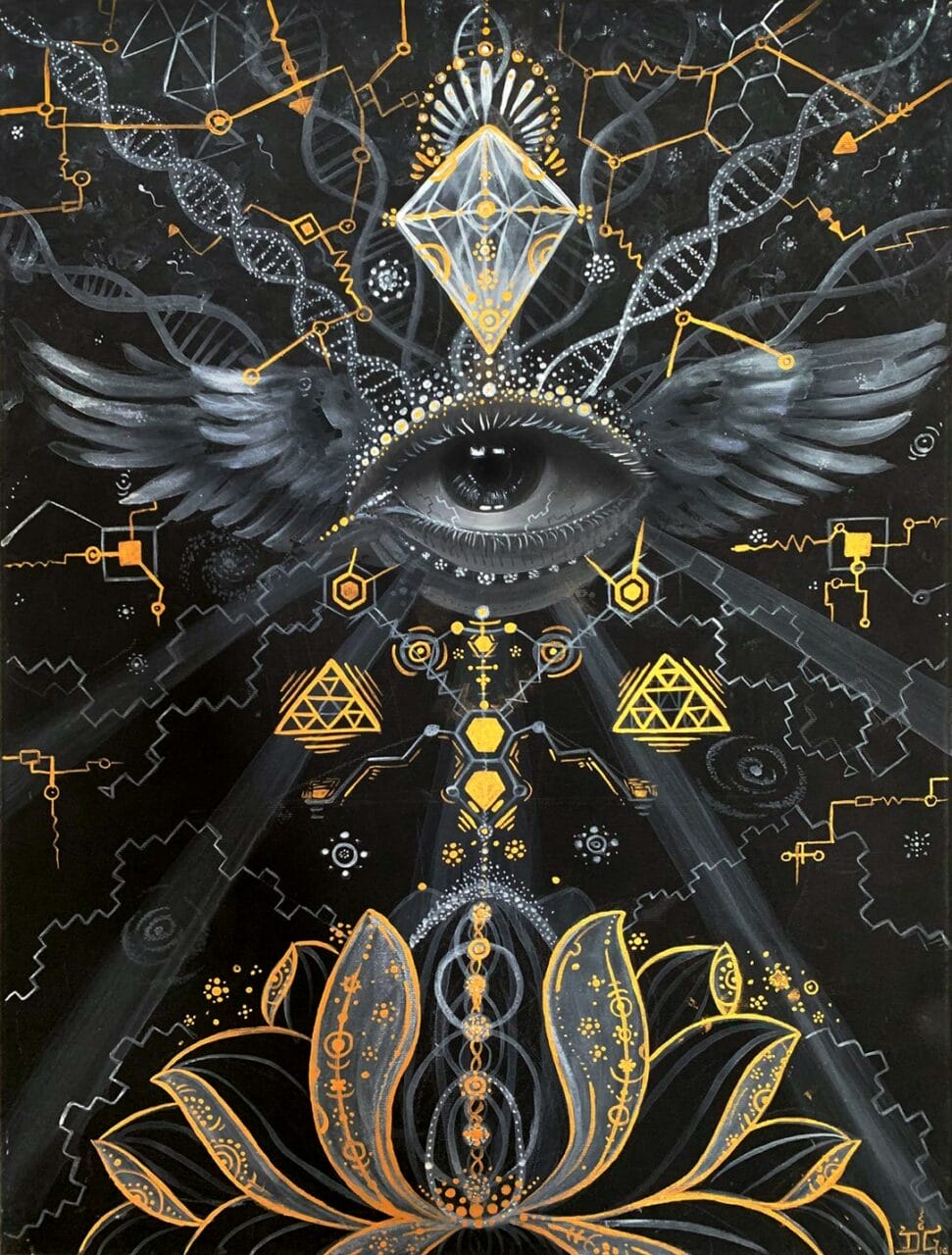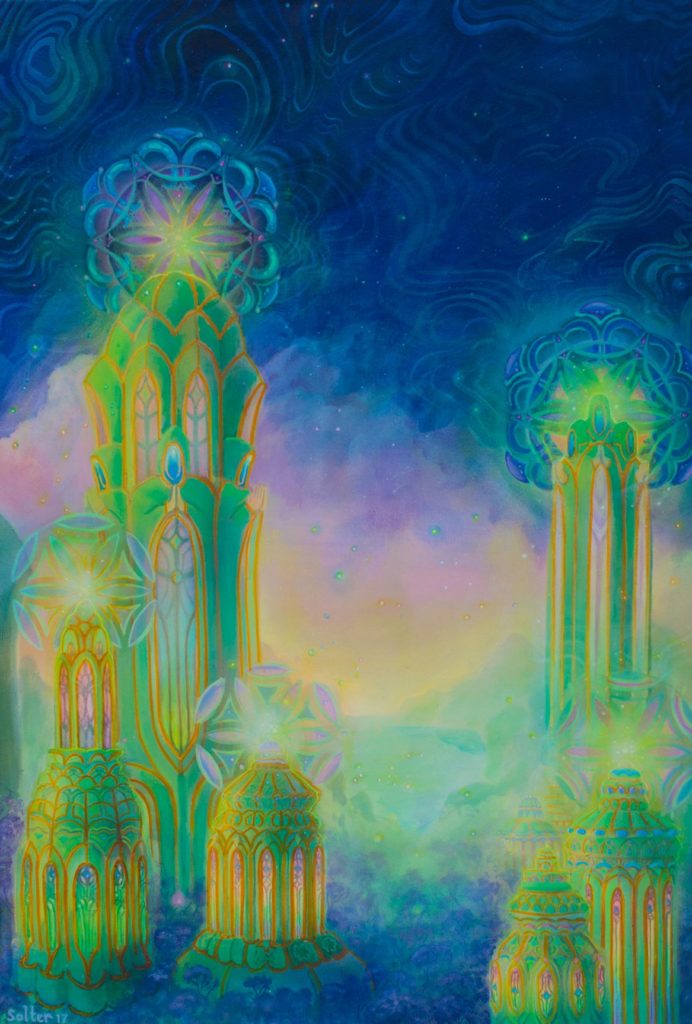
© Uni Kaya
The Historical Journey of Magic Mushrooms
Magic Mushrooms boasts a history that extends back to 9000 BC, as suggested by historical documentation. These unique mushrooms, with more than 200 species, contain psilocybin, a compound known for its hallucinogenic effects. The outcomes can include altered awareness, visual and auditory illusions, and deep spiritual encounters. For centuries, these mushrooms have been used in spiritual ceremonies, rituals, and traditions across diverse cultures and tribes. Much of this usage is traced back to North and South America.
Magic Mushrooms in Ancient Times
Throughout history, many cultures have utilized natural psychedelics, including Psilocybe Cubensis, as indicated by discoveries in the Sahara Desert, dating back over 7000 years. Archaeological findings reveal depictions of this intoxicating substance in prehistoric art across various regions. For instance, the indigenous tribes of the Sahara in North Africa illustrated its use in their paintings from around 9000 BC. Similarly, the renowned Selva Pascuala mural rock painting in Spain, approximately 6000 years old, indicates the use of Psilocybe Hispanica in religious ceremonies. The influence of these substances on cultural evolution, religions, arts, societal norms, and everyday life is increasingly recognized. Undoubtedly, this substance has left a deep mark on our culture and society.
A Brief History of the Use of Magic Magic Mushrooms
Historically,magic Magic Mushrooms have been consumed for a long period. The psychoactive substance we know today has cut across various centuries, with different practices tied to its usage. Who wouldn’t want to harness nature’s gifts? It’s time for Buy Dmt Canada to delve into the historical journey that has led Magic Mushrooms to its current standing.
Major Highlights
- Dried Magic Mushrooms has been part of traditional rituals and spiritual healing for centuries. Today, it’s used as a treatment for mental health disorders.
- Magic Mushrooms became a symbol of the hippie culture and played a major part in the psychedelic revolution, advocating its recreational use.
- Significant figures like Wasson, Sabina, and McKenna brought psilocybin into the contemporary world.

© Jonathan Solter
Endorsing the Stoned Ape Theory
The Stoned Ape Hypothesis was first proposed by Terence McKenna. He theorized that psilocybin might have influenced human evolution, especially in terms of cognitive development. Regardless of certain criticisms, the intriguing nature of this theory remains undeniable.
Ancient Civilizations and Sacred Rituals
Ancient societies used symbols, artworks, and statues to depict cubes, which indicates the ceremonial usage of Magic Mushrooms. The Aztecs and Mayans used it to establish communication with supernatural beings, including gods. In the culturally rich Aztec community, it was referred to as “teonanácatl“, which means “flesh of the gods”. The concept of a psychedelic experience was unfamiliar to them, resulting in their interpretation of it as a divine entity. In Siberia, shamans used hallucinogenic Magic Mushrooms. They specifically utilized a hallucinogenic substance (Magic Mushrooms) known as “Amanita Muscaria” for spiritual healing and conventional traditions, despite its toxic nature. This usage can be traced back nearly ten thousand years. African tribes, specifically those from the Congo and Zimbabwe, used cubes during their tribal ceremonies for communicating with ancestors, inducing visions, and promoting spiritual healing. These ancient societies have significantly contributed to the modern context of psilocybin usage. Their reverence for this substance originated from its divine significance and its ability to trigger mystical experiences.
Magic Mushrooms in Myths and Folklores
Several stories, including those by Gordon Wasson, highlight the connection between Magic Mushrooms and the spiritual world, emphasizing its role in folklore and mythology as a medium for divine communication and insight. In olden India, the Soma, a ceremonial beverage mentioned in the Vedas, was thought to induce altered states of consciousness. Scholars like Wasson suggest that it may have been made from psychoactive plants, specifically fly agaric. Some argue that this ancient drink might have consisted of a mixture of different plants. Regardless of its origin, the history of psychedelics suggests that Soma facilitated the display of sacred symbols during rituals, symbolizing a pathway to advanced wisdom or spiritual enlightenment.
The Contemporary Era
A Synopsis of the
Beginnings
Historical data from the era before Columbus’ arrival in the Americas show that the Mayans and Aztecs utilized psilocybin, also known as Magic Mushrooms. Spanish rulers in the 15th and 16th centuries considered its use as uncivilized and subsequently outlawed it. Despite this ban, shamans secretly consumed the magic Magic Mushrooms, effectively preserving their cultural rituals over the next 400 years.
Revival in the Western World
The 1950s saw a revival of these substances in the Western world, largely due to the pioneering work of individuals such as R. Gordon Wasson, Roger Heim, and Albert Hofmann. During a visit to Mexico, they successfully isolated two psychedelic compounds (psilocybin and psilocin) from the Magic Mushrooms obtained from the Mazatec tribe.
Wasson went on to publicize his findings, uses, and insights about magic Magic Mushrooms in Life magazine. His articles and personal experiences contributed to the recognition of the substance as a potent hallucinogen.
By the time the 1960s arrived, the substance had become emblematic of the Hippie culture and was considered a tool for spiritual exploration. However, its use also led to notable controversy and sparked a revolution in the recreational use of hallucinogenic substances.
Further Progress: Worldwide Ban
In 1971, psilocybin was classified as a Schedule 1 illegal drug by the United Nations Convention on Psychotropic Substances, alongside Lysergic Acid Diethylamide and N, N-Dimethyltryptamine. These substances were all deemed to have no medicinal value and a high potential for misuse.
This led to extensive criminalization in Western countries, including Canada and the U.S., severely limiting the spiritual and therapeutic uses of the substance.
The Modern Resurgence of Psilocybin
Recently, there has been an easing of the stringent laws controlling the use of psilocybin, beginning with its decriminalization. This shift aligns with the UN’s provision for treaty member nations to regulate the substance as they see fit.
At the same time, a growing body of research and clinical trials regarding psychedelics and consciousness strongly suggests potential medicinal uses for psilocybin. A study conducted in 2021 investigating the therapeutic use of psychedelics indicates that the 1970 ban greatly hampered further research. However, a preliminary study in 2004 rekindled interest in psilocybin, suggesting possible uses in neuropsychiatry, especially for treating mental health conditions such as:
- Depression, Anxiety, and Stress
- Post-traumatic Stress Disorder (PTSD)
- Obsessive-compulsive Disorder (OCD)
- Substance Abuse (Assisting in Overcoming Addiction)
- Excessive Alcohol Consumption and Drugs)
Media and Art’s Influence
The topic of psychedelic cubes has grown in popularity and is now represented in various formats due to increasing public interest. This renewed curiosity about these substances is being fuelled by different forms of media, art, and literature. Films such as “Fantastic Fungi” by Director Louie Schwartzberg, along with documentaries on their therapeutic properties, have deepened the public’s understanding of their mental and physical effects. Michael Pollan, the author of “How to Change Your Mind,” has conducted extensive research on the use of psychedelics for mental health and spiritual development, further sparking interest in their societal and therapeutic value.
Prominent Historical Advocates of Fungi
- María Sabina: María Sabina, a Mazatec shaman and poet from Mexico, played a significant role in introducing psychedelic cubes to the Western world. She invited Wasson to participate in her Magic Mushrooms rituals.
- Gordon Wasson: Wasson, a writer, gained recognition for raising global awareness about the substance. His comprehensive account of his experiences with Sabina contributed to a broader understanding of its traditional usage.
- Terence McKenna: McKenna, a prominent advocate for psychedelics, was instrumental in underscoring their cultural and philosophical relevance. His speeches, writings, and research popularized the “Stoned Ape” theory, which he proposed as a tool for cognitive enhancement that profoundly impacted society.
The Timeline – A Brief Overview
with TRD.
| Prehistoric | Artifacts from prehistoric times, such as stone art found in the Sahara, Africa, depict its usage. |
| Ancient | The Maya and Aztec civilizations incorporated teonanácatl into their religious and spiritual rites. |
| 16th Century | Its use was discouraged due to connections with Indigenous beliefs. |
| 18th Century | The drug’s “intoxicating” effects came to light in 1799 when four children inadvertently ingested Psilocybe Semilanceata, highlighting the potential risks associated with its use. |
| 20th Century | Wasson and Sabina introduced the drug to the Western world, sparking a psychedelic revolution among the hippie culture. The UN legalized the possession and consumption of the substance. |
| 21st Century | Clinical studies are currently being conducted to validate its medical potential. |
The Emergence of the Psychedelic Era and Beyond Redemption | Purchase Magic Mushrooms Online at Buy Dmt Canada
With the backing of robust scientific research, Buy Dmt Canada’s consistent use of cubes will persistently expand until it receives worldwide acknowledgement. Buy Dmt Canada’s online Magic Mushrooms store is poised to facilitate this shift. Our extensive product range appeals to customers, encouraging them to embark on the intriguing and therapeutic journey of psilocybin. Secure your preferred items from Zoomies today.
Commonly Asked Questions
No, Amanita Muscaria does not encompass the active ingredients present in Psilocybe Cubensis. Instead, the psychoactive compounds in fly agaric are muscimol and ibotenic acid. One prevalent theory about the origin of Soma suggests it is a concoction of various psychoactive plants. Similarly, ayahuasca is a mind-altering drink. Notably, the only link between the two is the perception of soma as an analogue of ayahuasca. It was scrutinized for potential Magic Mushrooms poisoning following its categorization as a toxic Magic Mushrooms. Presently, it is recognized as the Psilocybe Mexicana.

